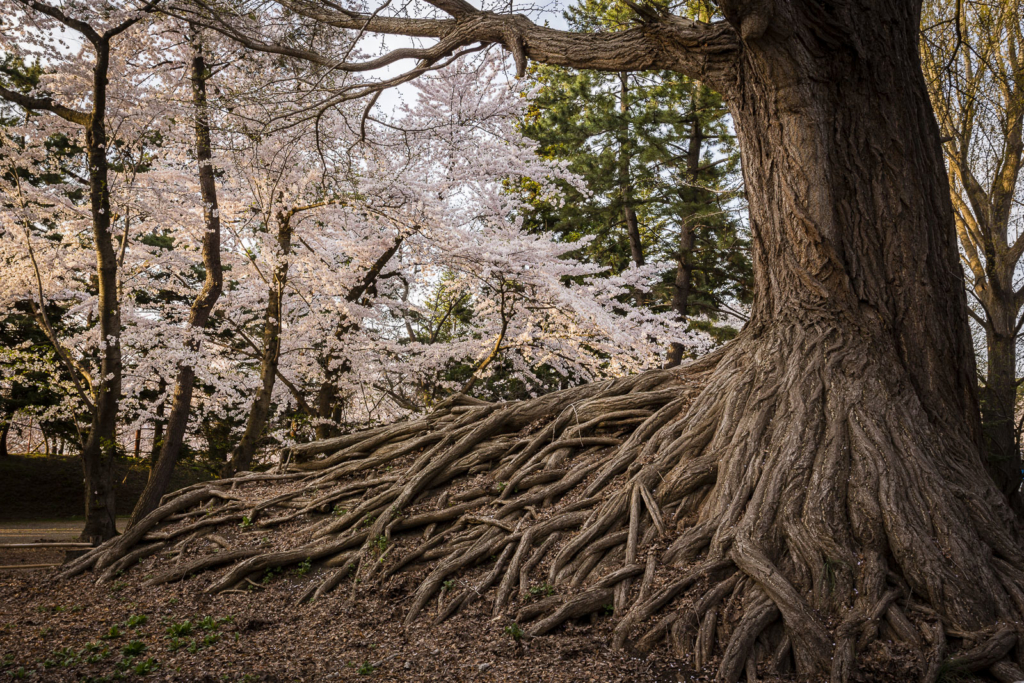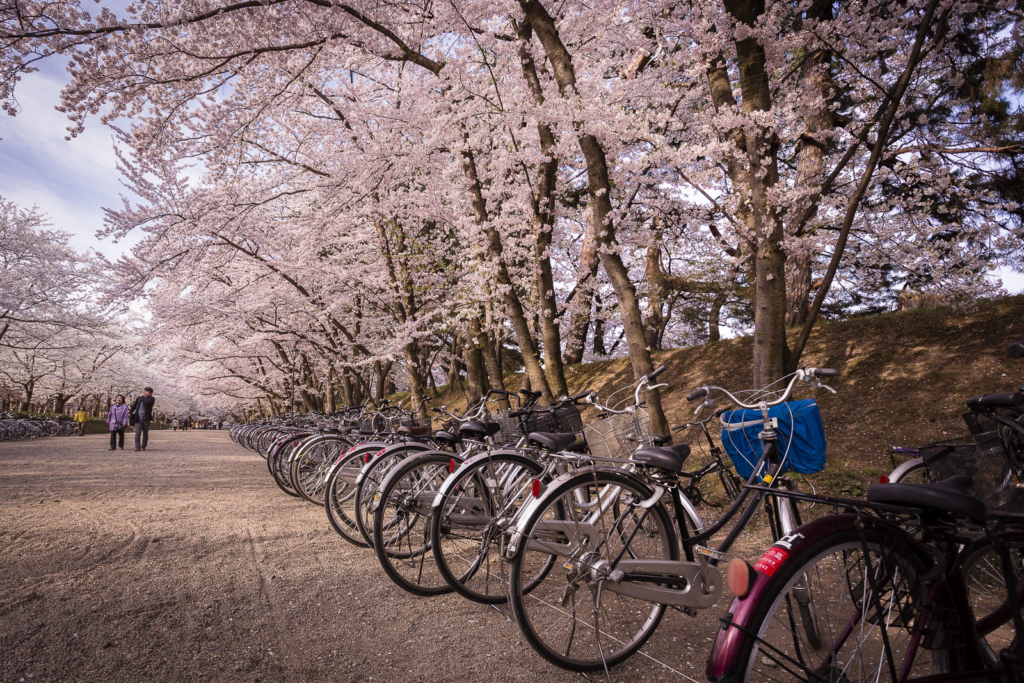“The perfect blossom is a rare thing. One can spend an entire life looking for one, and it would not be a wasted life.”
This line from the feudal lord Katsumoto, a character from the movie “The Last Samurai”, shows the relationship that Japan has with nature, and with cherry blossoms (sakura) in particular. It’s not just a poetic line made up for a Hollywood movie. During the cherry blossom season (that can go from the end of March to the middle of May, depending on the region), it’s a feeling that one can really witness.


Hirosaki is a small town in the province of Aomori, in the northern edge of the island of Honshu, the largest of the Japanese archipelago. It is one of the best spots in Japan for hanami (which literally means “flower viewing”). The Hirosaki Castle is hidden in a park whose entrance is lined with trees, completely covered in white and pink blossoms. It’s like a snowstorm has fallen over the town but the flakes decided to stubbornly stay just on the tree branches. As I enter in the park, my jaw drops with the many species of blossoming trees. Some have branches that fall like weeping willows, others form tunnels over large footpaths.






Around me people stroll taking advantage of the show provided by nature. Couples walk hand in hand, kids and adults ride bicycles through tunnels formed by branches. Some enjoy the reading of a good book sitting on a bench, others use small rowboats to navigate through the small lakes and canals in the park. Under some of the trees, people leave tarpaulins for picnics. I later learnt that this is quite a tradition for Japanese companies: rookies have the responsibility to take tarpaulins and stay there to secure the spot, sometimes until the next day, when the senior employees join the party.






Hirosaki Castle is a typical, three-storied, Japanese castle. Built by the Tsugaru clan in 1611, and renovated in the meanwhile, it is surrounded by a moat filled with water and covered in cherry blossom petals. Across that moat is a red bridge, filled with tourists patiently waiting their turn to take a selfie, framed by the historical building and the blossoming trees. Apart from them and their cameras and mobile phones, this is, without a doubt, the kind of landscape I’d imagine when I used to read stories and legends from medieval Japan.


The fascination of Japanese for the cherry blossoms can be explained by the buddhist belief in life as something ephemeral. Just as our time in this world is limited, the cherry blossoms will also bloom, reach the pinnacle of their beauty, and then gradually fade away. That is not necessarily good or bad, it’s just nature as it is. Thus, hanami becomes a symbolic appreciation of life at its most beautiful phase. As my walk through the park extends until late afternoon, seeing all the happy faces of visitor families having fun, that is precisely the feeling that remains: that I am part of an enormous celebration of life.

If samurai lord Matsumoto had visited Hirosaki castle, I bet he would not need a lifetime to find the perfect blossom.

